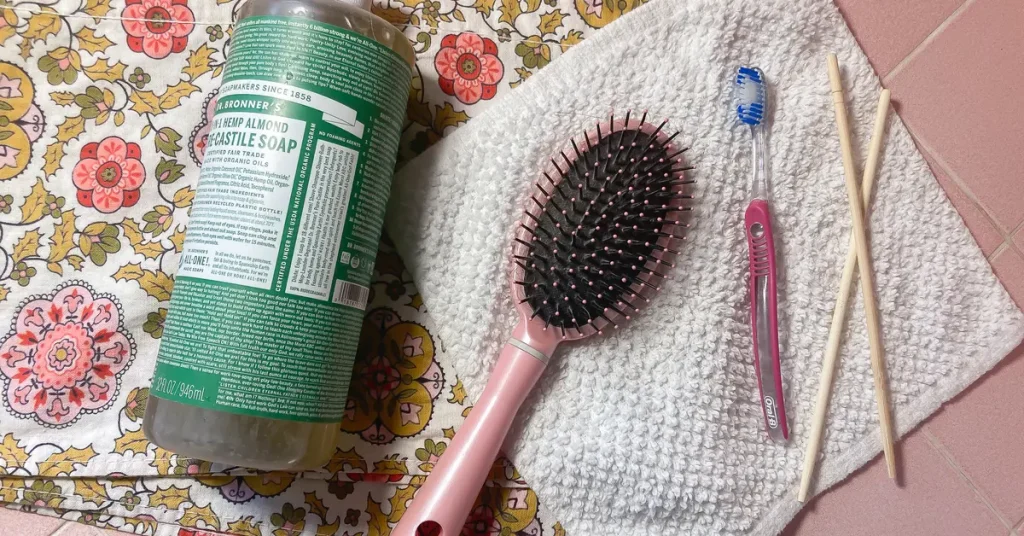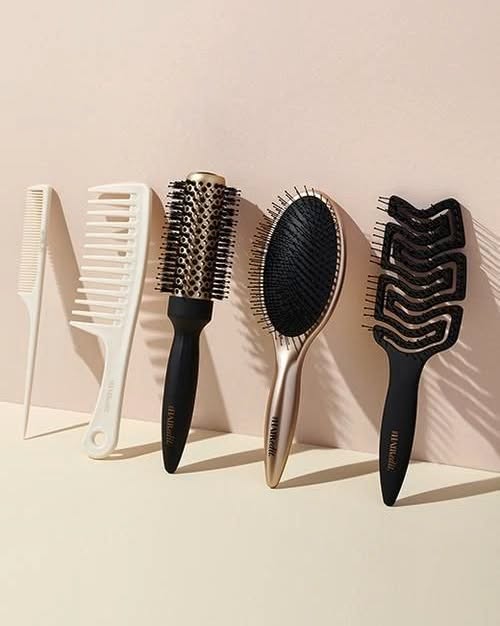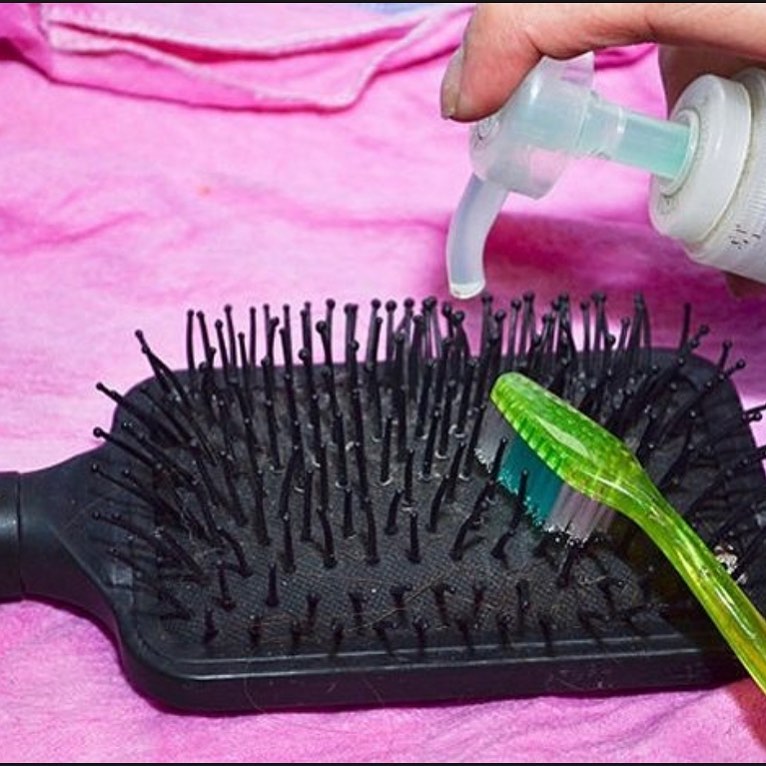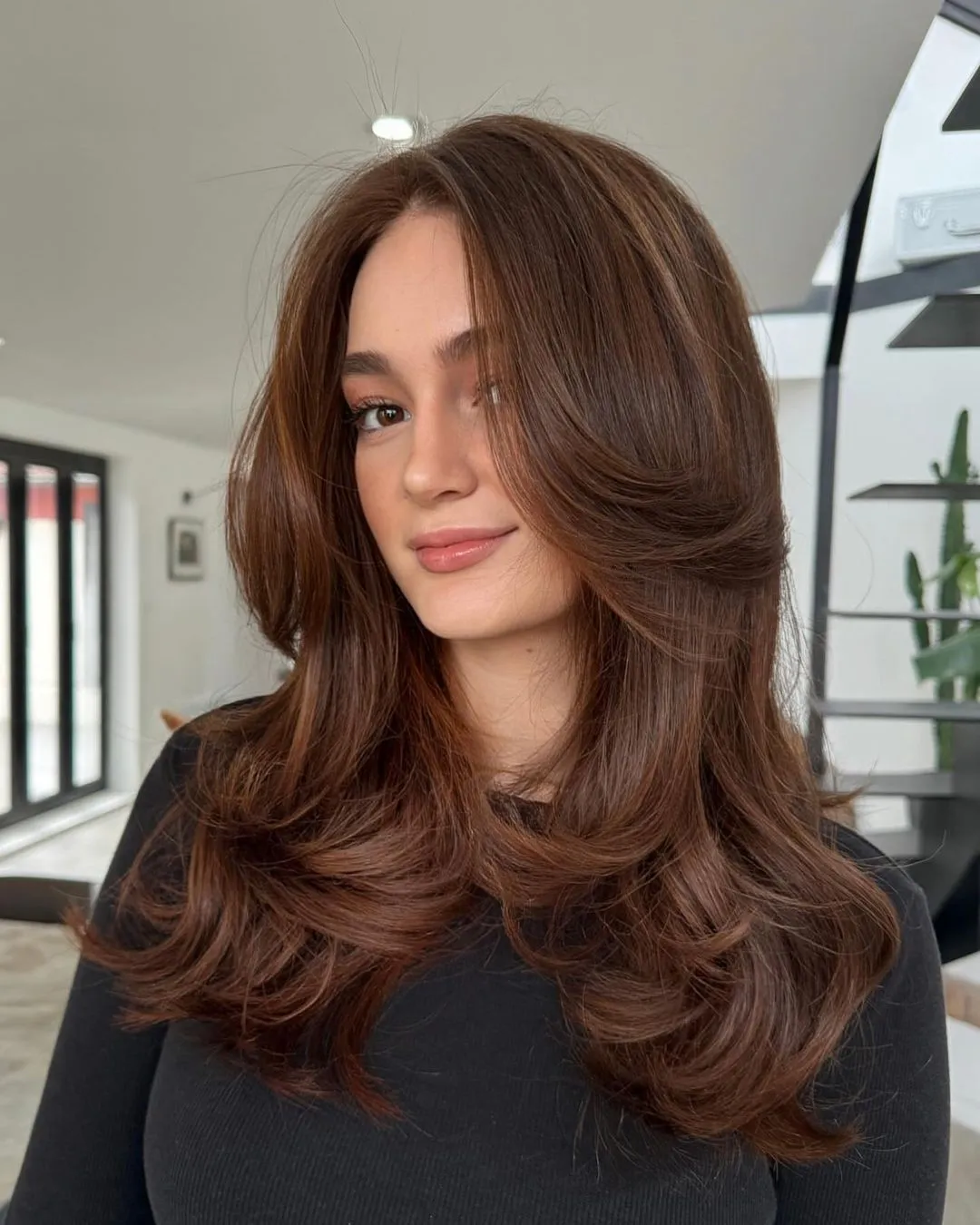How to Clean and Wash Dirty Hair Brush? (Step by Step)

I used to ignore my hair brushes for weeks—until I realized they were secretly messing with my hair. A dirty brush doesn’t just look gross, it holds on to old hair, oils, and product buildup.
That gunk can go right back into your clean hair. Not cool, right? If your brush feels sticky or looks dusty, it’s time for a quick clean-up.
Don’t worry, though—washing a hair brush is way easier than you think. I’ll show you a simple, step-by-step way to do it at home. Your hair (and scalp) will thank you!
Why You Should Clean Your Hair Brushes Regularly
I didn’t always think about cleaning my brushes. But once I saw all the dust, oil, and old hair stuck in there, I knew I had to change my ways.
Over time, brushes collect more than just hair. There’s product buildup, dead skin, dirt, and natural oils. All that gunk doesn’t just stay on the brush—it goes right back into your clean hair every time you use it.
That’s not just gross. It can mess with your scalp too. A dirty brush can spread bacteria and even lead to itchy or oily roots.
Clean brushes style better, feel nicer, and last way longer. Trust me, it’s a small step that makes a big difference in hairbrush maintenance and your overall brush hygiene. Once I made cleaning part of my routine, my hair actually looked healthier.
What You’ll Need to Clean a Hair Brush
Before I dive in, I like to grab a few things so I don’t have to stop midway. Here’s what I use to make my own little DIY hairbrush cleaner kit:
- A comb or pointed tool (to pull out hair)
- A bit of mild shampoo or dish soap
- Baking soda or vinegar for deep cleaning (totally optional but helpful)
- An old toothbrush for scrubbing
- A bowl of warm water
- A clean towel for drying afterward
That’s it! No fancy gear needed. I love using natural brush cleaning methods, and honestly, even just shampoo works great if that’s all you’ve got. The key is to get in there and actually do it.
Step-by-Step Guide Of How to Wash Hair Brushes
I used to think cleaning a hairbrush was a chore. But once I figured out a simple routine, it only took a few minutes. Now, I treat it like washing my face—just part of staying clean.
Here’s the best way to clean a hairbrush, step by step:
Step 1: Remove Hair from the Brush
First, I get rid of all the loose hair. You can use your fingers or a tail comb to pull it out.
If the hair is stuck, try twisting it with the comb. This helps lift even the tangly bits.
Removing the hair is key. If you skip this, the rest of the cleaning won’t work as well. It’s the easiest way to start hairbrush maintenance off right.
Step 2: Prepare a Cleaning Solution
Next, I grab a bowl and fill it with warm water. Then I add a squirt of mild shampoo or dish soap. Both break down oils and grime.
Sometimes, I toss in a little baking soda or white vinegar. This helps fight tough buildup and odors. If you’ve ever wanted to soak a hair brush in vinegar, this is the time.
It’s a super easy DIY hairbrush cleaner and works like magic.
Step 3: Soak the Brush (If Applicable)
Now, not every brush should go in water. I’ve learned that the hard way.
- Plastic and nylon brushes: Go ahead and soak them for about 10 minutes.
- Wooden handles or natural bristles (like boar): Don’t soak these! The wood can crack, and the bristles may fall out.
Instead, for delicate brushes, I dip just the bristles in the solution or skip to the next step.
Step 4: Scrub the Base and Bristles
Once it’s soaked (or if you skipped soaking), I take an old toothbrush and get to work.
I scrub gently between the bristle rows. That’s where the gunk hides. I focus on the base because that’s where product buildup collects the most.
Even if I don’t see it, I know it’s there. And I always feel better after a good scrub.
Step 5: Rinse Thoroughly
I rinse the brush under running water. I keep going until all the soap and gunk is gone.
If you leave any residue, it’ll go back in your hair next time. No one wants that.
Step 6: Dry Properly
This part matters more than you’d think.
I shake off extra water. Then I lay the brush flat on a clean towel, or bristles-down. That way, the water drains out instead of sitting inside the base.
I let it air dry fully before using it again. Never use a wet brush—it can trap moisture and grow mold. Yikes.
How Often Should You Clean Your Hair Brushes?
This is a question I used to wonder about too. For a long time, I just cleaned mine when it looked dirty. But I learned that waiting too long can hurt your hair more than you think.
So, how often should you clean your hair brush? Here’s what works for me:
- Once every 1–2 weeks: That’s the sweet spot. It keeps dust, oil, and old product out of your hair.
- More often if you use a lot of products: Hairspray, gels, and leave-ins can really pile up. I clean my brush once a week when I use styling products daily.
- Got an oily scalp? Then bump it up. I sometimes clean mine twice a week in the summer when my scalp gets greasy faster.
- Replace old brushes: If the bristles are bent or the pad is cracked, it’s time for a new one. I try to replace mine every 6–12 months depending on wear.
Regular hairbrush maintenance not only keeps your brush clean—it also helps your hair stay healthier, shinier, and easier to manage.
Quick Tips for Daily Hair Brush Maintenance
I get it—life is busy. You don’t always have time to soak and scrub a brush. But these small steps take just seconds and make a big difference:
Remove hair after every use: I just run my fingers through the bristles. It keeps buildup away and makes weekly cleaning way easier.
Don’t use a dirty brush on clean hair: It’s like using a dirty towel after a shower. Makes no sense, right?
Store it in a dry, clean spot: I keep mine in a drawer or brush holder. Avoid damp areas like the bathroom sink—it can grow mold.
Never share your brush: Even with close friends or family. Brushes carry oils, dead skin, and even bacteria. Sharing them can lead to scalp issues.
These daily habits keep my brushes in top shape and save me time in the long run. Trust me, it’s worth the extra minute.
Special Care for Natural and Delicate Brushes
If you’re like me and love using boar bristle brushes or wooden-handle brushes, you’ll need to treat them a little differently.
These types are great for your hair—they spread your scalp’s natural oils, which makes your hair shiny and soft. But they’re also a bit more sensitive.
When it comes to cleaning boar bristle brushes, the usual soak-and-scrub method just won’t do.
Here’s what I’ve learned over time:
Don’t soak them: Water can seep into the wooden base and cause cracks. I made that mistake once, and the handle split!
Use a damp cloth: I dip a soft cloth in warm water with a tiny bit of shampoo, then gently wipe the bristles. No soaking needed.
Try spot cleaning: For stuck-on dirt, I dip a toothbrush in the soapy water and lightly scrub between the bristles.
Let it air dry: Always bristle-side down, so water doesn’t sit near the base.
These simple steps help me keep my brushes in top shape without ruining them. When I started following these brush hygiene tips, my brush lasted way longer—and my hair thanked me for it.
Final Words
Keeping your hair brush clean might seem small, but it makes a big difference. I’ve learned that a clean brush means less buildup, fewer tangles, and healthier hair.
Plus, it helps your brush last longer, saving you money in the long run. Just a few simple habits—like weekly cleaning and daily maintenance—can level up your hair care routine without taking much time.
Trust me, once you get into the habit, it feels just as good as a fresh hair wash. So go ahead, show your brush a little love!








